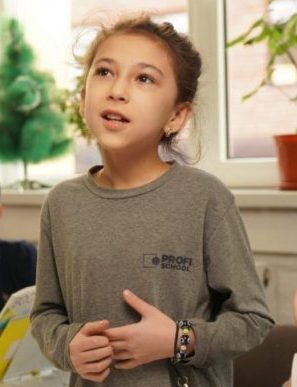
September 26, 2022, by Rupert Knight
Oracy in the classroom: making space for authentic voices
In this post, Rupert Knight reflects on recent visits to classrooms to observe practice in oracy (or the skilled use of spoken language) and considers how we can ensure that learning through talk involves authentic pupil voices.
The importance of oracy
In a previous blog in this series, I outlined some features of oracy, particularly focusing on the power of ‘exploratory talk’ and its relationship to classroom practices. A long line of research supports the value of spoken language for academic, social and participatory goals. Some of the impact on wider learning is summarised by the Education Endowment Foundation’s analysis of ‘oral language interventions’ as ‘very high impact for very low cost based on extensive evidence’.
In the last year or so, oracy has had a boost to its profile. In April 2021 the Oracy All Party Parliamentary Group published its final report ‘Speak for Change’ and strongly advocated for the importance of oracy being positioned at the heart of school life. The report called for greater guidance, investment and professional development, claiming that spoken language ‘remains undervalued in our education system.’ Much of this recent interest seems to be in oracy’s potential to improve students’ life chances as part of a ‘levelling-up’ agenda, through developing a wide range of communication and collaboration skills. Indeed, there is plenty of evidence for a link between proficiency in spoken language and life opportunities, as summarised by the Communication Trust. In addition to this view of oracy as a set of skills to enhance opportunity, however, it seems important not to lose sight of its deeper potential for also giving learners a degree of authentic voice and ownership.

Learning through talk
Taken alongside the goal of developing communicative competence, using talk as a pedagogical strategy has often been the more controversial aspect of oracy. Robin Alexander has noted that, compared with other countries, the UK has much more of a tendency to regard talk as merely social, rather than also as a valued way of learning. While the case for oracy seen as learning to talk effectively seems to be widely accepted and appears, albeit in a limited way, in the National Curriculum, learning through talk is sometimes tainted with preconceptions about unproductive pupil-led learning. This scepticism seems to have grown with the rise of interest in direct instruction, more associated with teacher talk, as illustrated in this blog from David Didau. As Didau rightly points out, however, the issue is less about the ‘right’ or ‘wrong’ sort of pedagogy, but rather about what is feasible to do well. It is true that productive learning through pupil talk takes some effort to achieve but, rather than simply dismiss it as ‘too difficult’, we can instead take on board what we know about good practice based on decades of research in this area.
Much of this expertise is summed up in accessible form in the excellent Oracy Cambridge blogs from The University of Cambridge and translated into practical guidance and resources by Voice 21. As schools develop the use of pupil talk as part of the classroom repertoire, one important goal unifying learning to talk and learning through talk is ensuring that the voices heard are not merely superficially articulate but also authentic.
Authentic pupil voices
So what do I mean by ‘authentic’ voices? One starting point is to consider Aliza Segal and Adam Lefstein’s term ‘exuberant voiceless participation’. It refers to the way that, even in classrooms which are superficially ‘dialogic’ (in that multiple voices are heard and valued in a talk-rich environment), participation can all too easily become ‘hollow and ritualistic’, simply echoing the teacher’s views. In contrast, they suggest that truly exercising voice involves:
• Having the opportunity to speak
• Expressing one’s own ideas
• Speaking on one’s own terms
• Being heard and attended to
I have recently been visiting classrooms around the country in both primary and secondary schools in an attempt to capture and deconstruct oracy practices. Along the way, I have noticed three main ways that schools seem to preserve authenticity in pupil talk. Below, I illustrate these strategies in a primary context with brief examples from real schools.
1. Creating the conditions
Teaching is deliberately set up to allow time and space for pupils’ own ideas by ensuring that:
• Tasks genuinely facilitate diverse perspectives: Y3 and Y4 pupils have gathered in the hall for John’s oracy assembly. The stimulus for discussion is a short animated film full of ambiguity and open to various interpretations. The film is paused in several places to allow for open questions such as ‘What do you think is going on here?’ prompting some imaginative speculation and contrasting views, based on the evidence on screen.
• Opportunities are provided to rehearse ideas safely: Y4 pupils in Amy’s English lesson try out their ideas for enhancing vocabulary in a piece of shared writing by talking with a partner first. This ‘safe’ rehearsal ensures that everyone has an audience and allows ideas to be refined. Amy eavesdrops as pairs talk and is then able to call strategically on diverse contributions that add to the collective build-up of ideas.
• There is something of substance to talk about: Kate’s Y6 children take part in a whole-class debate about the relationship between energy and poverty. Her pupils are armed with relevant information in the form of graphs and fact sheets, which they make sense of together before drawing on this evidence to support well-informed arguments about this real-world issue.
2. Teacher stance
There is a commitment to a degree of flexibility through genuine engagement with pupils’ ideas through:
• Uptake of pupil responses: In Nathan’s Y3 classroom, pupils share their thoughts on light sources and shadow formation, prompted in part by their reading of a picture book relating to these themes. Instead of immediately evaluating their ideas himself, Nathan listens and then brings in others to add to or challenge what has been suggested. Sometimes, he invites the speakers to manage this process of dialogue themselves, asking them: ‘Who would you like to carry on our conversation?’
• Openness to pupils’ own questioning: A head teacher reflects on the way that pupils who were previously somewhat passive now feel able to question, in an appropriate tone, what they are hearing in school. ‘All of a sudden you have children who can question the teacher in the sense that they want to know more. They might not agree with you but they have the skills to do that without being confrontational or rude. It’s teaching teachers that there is a place for children to talk back, to talk back with you and question what you say to them. It’s been a move but we got there. There is a real involvement of the children in their learning.’
• Allowing space for informal collaboration: Alongside more teacher-led episodes, this involves being able to step back and allow time and space for ‘messy’ interaction. In her Y1 history lesson, Sam gives pairs of children open-ended tasks, with facts gradually fed in, allowing them to work out and compile aspects of the daily life of a Victorian chimney sweep or scullery maid. There is a lot of autonomy and Sam’s interventions are low-key. At various points, questions emerge and the class comes together to consider them collectively. ‘They were so interested and the learning stuck,’ Sam says. ‘They owned that learning.’
3. Opportunities for agency
Pupils’ views matter: their ideas are taken seriously and make a genuine difference as teachers:
• Ask ‘authentic questions’ without set answers: In Y6, Amanda begins her maths lesson with calculations on the board and the questions, ‘What do you notice? What is the same and what is different?’ Later, pupils are challenged to find and then argue convincingly for the ‘most efficient’ way of solving given problems. The emphasis is not on the correct answer (though this is discussed) but on comparing and evaluating children’s emerging approaches to problem solving.
• Offer opportunities to make real change: Y1 children in Steve’s class reflect on recent activities at school to promote sustainability and reduce plastic use. They discuss in pairs and as a whole class the pros and cons of different initiatives, adding to one another’s contributions using the language of ‘building’. These debates have an authentic purpose: the school has a commitment to agency and change, not only in school but also the local community, with pupil-initiated action on things like food packaging and planting greenery in surrounding streets.
• Provide an authentic audience for talk: Sonia’s Y6 class has been working on maths problems with an explicit emphasis on children articulating their reasoning. As a final phase in the lesson, Sonia asks the pupils to plan an explanation of the problem solving process for an identified audience with the challenge: ‘If I were to show this problem to a child in another class, would they know how to work it out?’ Pupils begin to adapt their scrawled mini whiteboard jottings from the lesson into more coherent notes ready for recording onto tablets and later sharing with the other class.
Moving forwards

Returning to Segal and Lefstein’s four criteria, it is possible to see in these brief snapshots:
• Opportunities to speak in a variety of contexts and for a range of purposes, including in small and large groups and even across classes.
• Stimuli for talk without completely predetermined outcomes, for example prompted through authentic questions.
• Children given scope to speak informally and with minimal teacher ‘policing’ of their language forms when in peer collaboration mode.
• Pupils talking in the knowledge that they are being heard and that their voices may have impact, as seen in the sustainability debate.
All of these examples might broadly be characterised as part of a ‘dialogic stance’. As explained in another blog in the series, this refers to an overarching set of values about talk and an interest in multiple voices and perspectives which goes beyond just a focus on certain forms of talk.
A final, but important, point: the emphasis in this post on pupil agency and ownership of learning should not, of course, be seen as intrinsically opposed to teacher-led instruction. The examples shared here are specific episodes situated within wider contexts and varied classroom repertoires. Within an overall stance of valuing authentic pupil voices, it is ultimately a matter for the teacher’s professional judgment to determine whose voices are to the fore at any given moment to serve the learning.
Let’s tune in and hear what pupils have to say!
No comments yet, fill out a comment to be the first

Leave a Reply